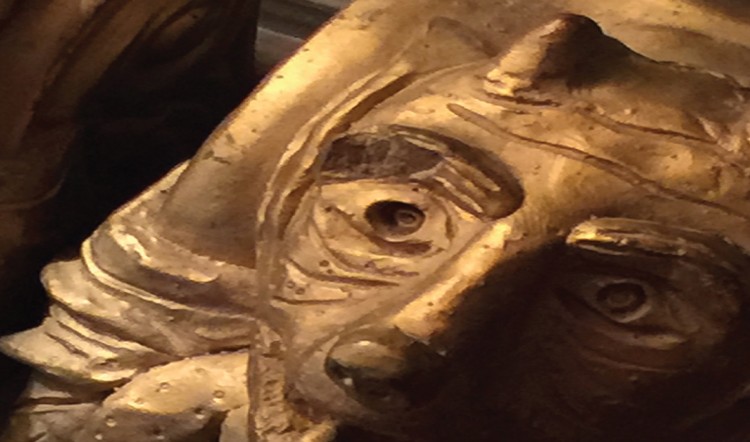Simple Tips for Making Memorable Characters
It’s a beautiful sunny day here in Memphis as I write this. My daughter and I have been watching some shows on Netflix and enjoying a lazy Saturday afternoon, but my mind has drifted to the blog, to the daily task at hand, so we take a brief break for me to share my tip for the day.
Today, we’re going to talk about making a memorable character–these tips apply equally well to fiction and gaming, so get your clipboard ready, as we whip through this, and I get back to the lazing.
Every character needs a name, so choose something appropriate, or at least have a list of names on hand at the ready. Typically, I like to make sure the name is period or genre specific. If it’s a genre you are less unsure about, such as Iron Dynasty, the list of names proves to be invaluable. What do I do? I name all the “important” characters and remember “important” varies. Typically, I give more prep time to an NPC then I may give to the monster, as they are going to have more screen time. That’s not to say I don’t love the monsters, but they don’t need a reasonable backstory and such, which we’re about to get to.
When we create NPCs, we have their Age, Description, Background, and GM Tips all written out. This has been an evolutionary process, but it has worked wonders for us. By following these rules, you create unique characters and it makes them very easy to run to boot. I have long had a reputation for creating interesting and quirky characters, so I’ll share a few of my secrets with you now.
Give a central focus to each NPC. This is something which makes them immediately recognizable, but for a game, you need to exaggerate just a tad–go a bit further, and your players will love you for it. If there is an NPC with a Death Wish, have them moan and groan about their desire to die in battle or what-have-you. They may constantly use the phrase “y’know” or they may even speak in the third person “General Hatch enjoys these fried yams. Yessir, he does.” By giving each character a piece of flair (yes, that’s an easy lay-up for you Office Spacers), you guarantee their uniquess, and everyone enjoys quirkness. Genre work thrives on archetypes with a twist.
If you need some homework, throw in any successful show–it doesn’t matter if you like it or not–and watch a couple episodes at least (I recommend at least six, if your serious). If you get lucky and catch a show with a particularly low budget starting out, you may catch shifts in character development and sets, but you should focus on the various actors and how their roles grow and shift and how relationships are forged in the show in question. The characters are easily identifiable by a central trait (such as Joey on friends being “a bit dense” or Worf prattling on about Klingon honor and generally getting pissed off a lot) and so on.
Here’s a big secret which a lot of GMs forget when they’re forging characters, and something I’ve seen some players guilty of. A character is more than a composite of numbers, edges, and hindrances. Every halfway decent roleplayer knows this. What it’s important for the GM to do is to create the backstory and then give GM tips which help define how the character is meant to be played, things which might not fit in mechanically elsewhere. For example, you can have a dilettante who has a thing for the working man and detests trusts fund babies. Rather than wedging such a factoid into a hindrance (as a clumsy quirk), you throw such information into the GM Tips, and give a reason why in here background. Maybe her father was a “working man” who married her rich mother, and she wants an honest fellow with dirt under his nails, and hands rough as sandpaper.
Good description is a kind of shorthand. Something descriptive and memorable without being verbose or cumbersome. Provide enough information for the players to mentally segregate the characters in their head. For example, Mr. Penny is a thin, balding man who dresses in work clothes is serviceable, but not too sexy. If Mr. Penny is a thin, balding man who dresses in starched work clothes, and wears a fresh carnation pinned to his lapel, he stands out a bit more. You don’t have to go to the outer bounds of wackiness to give a sharp description. Another example: Amanda Providence is a striking redhead with emerald eyes and a million dollar smile. Short and too the point. Just take care to have hindrances and edges reflect the cosmetics of the descriptors or you have failed, and will not be forgiven. I know this, for I have commited this sin in the past, and sharing such insight with you today is my penance.
Play around with these ideas. They’re simple and straightforward and cut to the meat of the matter, which is exactly what you should do with character creation. NPCs are the heart of any world. They are the touchstones for the players, the villains, the innocent citizens, the bandit king in the woods, the standing army, the politicians, the princesses, the paupers, and the pious who need saving. They are the givers of quests and the chorus of the GM. Take care of your NPCs and they will take care of you.
I encourage, nay challenge you, to create a half dozen NPCs using these rules while I go back downstairs to resume the television watching (read research). I bid you, dear read, adieu!
